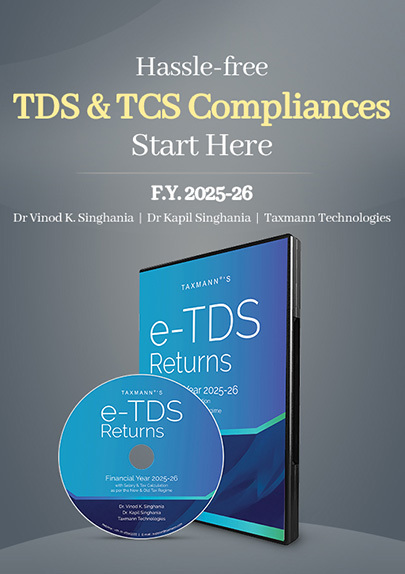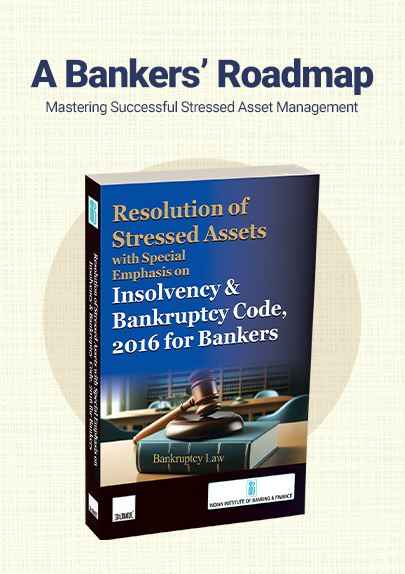Taxmann’s Analysis | Ind AS 2 Compliance – FRRB Observations & Impact
- Blog|Advisory|Account & Audit|
- 6 Min Read
- By Taxmann
- |
- Last Updated on 19 March, 2025
Ind AS 2 Compliance refers to adhering to the Indian Accounting Standard 2, which sets out the principles for inventory valuation and disclosure. It mandates that companies value inventories at the lower of cost and net realizable value (NRV), ensuring transparency and accuracy in financial reporting. This compliance helps prevent misstatements in financial statements, reduces regulatory risks, and maintains investor confidence by clearly outlining the methods and policies used for inventory measurement.
Table of Contents
- Common Ind AS Compliance Issues and Their Consequences
- Incorrect Accounting Policy for Inventory Valuation
- Incorrect Capitalization of Non-Inventory Expenses
- Non-Disclosure of Cost Formula and Accounting Policy Used in Inventory Valuation
- Misclassification of Cost Formula as an Accounting Policy in Raw Material Valuation
- Conclusion
Did you know that regulatory authorities flagged over 30% of reviewed companies for non-compliance with Ind AS 2 last year? These errors not only distort financial statements but can lead to hefty penalties and loss of investor trust.
Indian Accounting Standard Ind AS 2 (Inventories) establishes the principles for measuring and disclosing inventory in financial statements. Compliance with Ind AS 2 is essential to ensure transparency, comparability, and accuracy in financial reporting. However, several companies fail to adhere to these requirements, leading to misstatements and non-compliance issues.
This article highlights key observations made by the Financial Reporting Review Board (FRRB) on Ind AS 2 compliance, using real-world financial statement examples. It also explores the consequences of non-compliance and its impact on financial reporting.
1. Common Ind AS Compliance Issues and Their Consequences
To help finance professionals quickly identify key issues, here’s a summary of frequent compliance errors and their potential impact:
| Compliance Issue | Key Mistake | Impact |
| Incorrect Inventory Valuation | Ignoring Net Realizable Value (NRV) | Overstated profits, misleading financials |
| Wrong Cost Formula Application | Not distinguishing FIFO from the weighted average | Confused financial reporting |
| Misclassified Non-Inventory Costs | Capitalizing legal & ad expenses as inventory | Artificially inflated asset values |
| Lack of Disclosure on Cost Formulas | Not specifying FIFO or weighted average method | Reduced transparency for investors |
| Raw Material Valuation Errors | Valuing at cost without NRV assessment | Regulatory scrutiny, misreported financials |
2. Incorrect Accounting Policy for Inventory Valuation
2.1 Relevant Provisions
Ind AS 2, Para 9 – “Inventories shall be measured at the lower of cost and net realizable value.”
Ind AS 2, Para 6 – “Net realizable value is the estimated selling price in the ordinary course of business, less the estimated costs of completion and the estimated costs necessary to make the sale.”
2.2 Inventory Valued at Cost Without Considering NRV
| Observation |
| Several companies valued inventories solely at cost without comparing them to the net realizable value (NRV). For instance, a company reported its raw materials, work-in-progress, and finished goods at the weighted average cost but did not verify if the market value was lower. This approach violates Ind AS 2 since inventories should always be recorded at the lower of cost or NRV. |
| Implication |
| Failure to consider NRV can lead to an overstatement of inventory values, resulting in incorrect profit calculations. This misrepresentation may mislead investors and stakeholders about the company’s financial health, affecting decision-making and potentially leading to regulatory scrutiny. |
Quick Fix – Always cross-check inventory values against the Net Realizable Value (NRV) before finalizing financial statements.
2.3 Inventory Valued at NRV Without Considering Cost and Valuation of Finished Goods Considering Market Price Instead of NRV
| Observation |
| One company valued finished goods under forward contracts at NRV without considering the cost. Further, it was noted that other finished goods were valued at lower costs or market prices instead of NRV. The estimated costs of completion and the estimated costs necessary to make the sale have not been reduced from the estimated selling price for the purpose of valuation of inventories. The company did not follow the proper valuation formula. |
| Implication |
| Valuing inventories incorrectly affects the cost of goods sold (COGS) and gross profit margins. It can also distort financial performance metrics and lead to regulatory non-compliance, increasing audit risks and penalties. |
Quick Fix – Ensure that NRV is properly calculated by deducting estimated costs of completion and sale. Follow a consistent inventory valuation approach across all finished goods, aligning with Ind AS 2 guidelines.
A relevant extract of notes forming part of the consolidated financial statements of Tata Motors Limited for the year ended March 2024 reflecting appropriate disclosure of accounting policy is enclosed herewith:
3. Incorrect Capitalization of Non-Inventory Expenses
3.1 Relevant Provisions
Ind AS 2, Para 15 – “Other costs are included in the cost of inventories only to the extent that they are incurred for bringing inventories to their present location and condition.”
Ind AS 2, Para 16 –”Examples of costs excluded from the cost of inventories and recognized as expenses in the period in which they are incurred include:
(a) abnormal amounts of wasted materials, labour, or other production costs;
(b) storage costs, unless those costs are necessary for the production process before a further production stage;
(c) administrative overheads that do not contribute to bringing inventories to their present location and condition; and
(d) selling costs.”
| Observation |
| Certain companies incorrectly capitalized legal and professional charges, listing expenses, and advertisement costs to Work-In-Progress (WIP). These expenses were not directly related to inventory production and should have been expensed in the period they were incurred. |
| Implication |
| Capitalizing unrelated costs artificially inflates inventory values and defers expenses, misstating profitability and asset values. This practice can mislead investors and auditors, potentially leading to financial restatements and loss of stakeholder confidence. |
Quick Fix – Only capitalize costs directly related to bringing inventories to their present location and condition. Expense unrelated costs (e.g., legal, advertising, listing fees) in the period incurred to avoid inflating inventory values.
4. Non-Disclosure of Cost Formula and Accounting Policy Used in Inventory Valuation
4.1 Relevant Provisions
Ind AS 2, Para36 – “The financial statements shall disclose:
(a) The accounting policies adopted in measuring inventories, including the cost formula used.”
| Observation |
| Several companies disclosed the cost formula they used (e.g., weighted average or FIFO) but failed to specify the accounting policy adopted. On the other hand, one company’s policy stated that inventories were valued at cost or NRV but did not clarify whether FIFO or weighted average method was applied. |
| Implication |
| Lack of disclosure on cost formula creates ambiguity in financial statements, making it difficult for stakeholders to assess inventory valuation consistency. Investors rely on such disclosures for analyzing profitability trends, and incomplete information can reduce financial statement credibility. |
Quick Fix – Clearly disclose both the cost formula (FIFO or weighted average) and the accounting policy adopted in financial statements to ensure transparency and avoid investor confusion.
An extract of notes to the Standalone Financial Statements of Reliance Industries Limited for the year ended 31st March 2024 reflecting disclosure of the cost formula used is as below:
5. Misclassification of Cost Formula as an Accounting Policy in Raw Material Valuation
5.1 Relevant Provisions
Ind AS 2, Para 9 – “Inventories should be valued at the lower of cost and net realizable value.”
Ind AS 2, Para 36 – “The financial statements shall disclose the cost formula used.”
| Observation |
| One company stated that raw materials were valued at the weighted average cost but did not assess NRV. Additionally, it misclassified the weighted average method as an accounting policy instead of a cost formula. |
| Implication |
| Confusing cost formulas with accounting policies create misinterpretation risks for auditors and investors. This can lead to regulatory scrutiny, questioning whether inventory valuation is appropriately aligned with Ind AS 2. |
Quick Fix – Properly differentiate between cost formulas (e.g., FIFO, weighted average) and accounting policies. Ensure that NRV assessments are conducted for raw materials and not just finished goods.
6. Conclusion
Compliance with Ind AS 2 is essential for maintaining transparency, reliability, and consistency in financial reporting. The observations discussed in this article highlight frequent errors in inventory valuation, disclosure, and classification, which can result in material misstatements and regulatory non-compliance. To uphold financial integrity, companies must ensure that inventories are measured at the lower of cost and net realizable value (NRV), non-inventory costs are not improperly capitalized, and cost formulas—such as FIFO or weighted average—are clearly disclosed. Failure to adhere to these principles not only contravenes Ind AS 2 but also erodes investor confidence, distorts financial performance and may attract regulatory scrutiny or penalties. To mitigate these risks, organizations should proactively review and refine their inventory accounting policies and financial disclosures, ensuring they align with Ind AS 2 requirements and best practices.
Disclaimer: The content/information published on the website is only for general information of the user and shall not be construed as legal advice. While the Taxmann has exercised reasonable efforts to ensure the veracity of information/content published, Taxmann shall be under no liability in any manner whatsoever for incorrect information, if any.

Taxmann Publications has a dedicated in-house Research & Editorial Team. This team consists of a team of Chartered Accountants, Company Secretaries, and Lawyers. This team works under the guidance and supervision of editor-in-chief Mr Rakesh Bhargava.
The Research and Editorial Team is responsible for developing reliable and accurate content for the readers. The team follows the six-sigma approach to achieve the benchmark of zero error in its publications and research platforms. The team ensures that the following publication guidelines are thoroughly followed while developing the content:
- The statutory material is obtained only from the authorized and reliable sources
- All the latest developments in the judicial and legislative fields are covered
- Prepare the analytical write-ups on current, controversial, and important issues to help the readers to understand the concept and its implications
- Every content published by Taxmann is complete, accurate and lucid
- All evidence-based statements are supported with proper reference to Section, Circular No., Notification No. or citations
- The golden rules of grammar, style and consistency are thoroughly followed
- Font and size that’s easy to read and remain consistent across all imprint and digital publications are applied








 CA | CS | CMA
CA | CS | CMA



